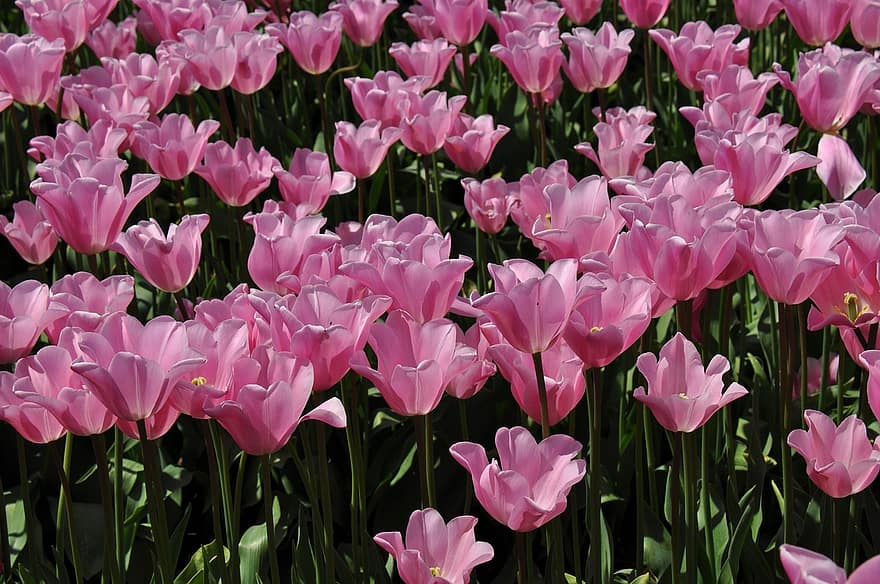It’s easy to figure out what grows well in Colorado if you do a little research on your desired plants’ ability to survive in your geographical location’s plant growing conditions. This has a lot to do with when and how your fruits, veggies, and flowers are planted, and where you do your gardening (outdoor or in a greenhouse).
What Growing Zone is Colorado?
According to the United States Department of Agriculture’s (USDA), the Centennial State’s plant hardiness zones range from the coldest Zone 3a to the warmest Zone 7a. In case you’re wondering, areas that fall under Zone 3a have an average low winter temperature of about -40˚ to -35˚F while those that fall under Zone 7a have an average of 0˚ to 5˚F.

What Fruits Grow Well in Colorado?
When you’re thinking about planting fruit trees in the state of Colorado, the best choices would be apricot, nectarine, apple, sweet and tart cherry, pear, plum, and peach. Except for nectarines and peaches that suffer damage when they’re exposed to -12 to -14˚ F, these plants are able to withstand up to about -25˚F. Just make sure that that they’re planted near your home.
What Vegetables Grow Well in the Cool Season in Colorado?
If you’re planning to grow vegetables in Colorado, consider growing leafy greens that include arugula, spinach, lettuces, kale, cabbage, collards, Swiss chard, radicchio, beet greens, turnip greens, endive, and garden cress. You might also want to try planting some root vegetables such as kohlrabi, leeks, rutabaga, radishes, potatoes, carrots, turnips, and beets. Other vegetables such as Brussels sprouts, broccoli, peas, and cauliflower will also grow well in the state.
What Flowers Grow Well in Colorado?
Although hundreds of different wildflowers grow in the state of Colorado, the most common ones include the Colorado blue columbine (which is the official state flower), bluebell, Indian paintbrush, Rocky Mountain bee plant, fireweed, sand-dune wallflower, subalpine larkspur, blanket flower, prairie flax, scarlet gilia, elephant head lousewort, silky lupine, and pink mountain heather.
These wildflowers can be seen practically everywhere – from the flat grassy meadows to the subalpine meadows in the mountains. However, the best time to catch these beauties on the flat prairie lands is in late spring or early summer. If you’re in the mountains, the best time to feast your eyes on these wildflowers is in July or August.
What Vines Grow Well in Colorado?
Aside from the grapevines, clematis, and climbing roses that you usually see in Colorado gardens, other climbing plants such as the five-leafed akebia, passionflower, wisteria, honeysuckle, and silver lace vine also grow best within the area.
Can I Grow Jasmine in Colorado?
Yes, gardeners in the Centennial State can grow these exquisitely beautiful climbing vines that produce delicate and sweet-smelling flowers. In case you’re wondering, Colorado’s planting zones range from 3a to 7a. Although most of the Jasmine genus species are usually found in plant hardiness zones 9 to 10, you can find winter jasmine, the most cold-hardy species, thriving in zone 6.
What Grows Well in Colorado Greenhouses?
Since setting up your very own greenhouse allows you to take control over your plants’ growing environment, you can grow virtually any plant in a greenhouse.
What are the Benefits of Greenhouse Gardening?
Greenhouse gardening offers you plenty of benefits including extended growing seasons, protection from harsh weather conditions, seasonal pests, and vermin, as well as more grocery savings. To give you a closer look at the benefits of greenhouse gardening, check this out:
You’ll grow more plants within longer growing seasons
Greenhouse gardening allows you to extend growing seasons and grow more plants that aren’t native to your area. Thanks to this enclosure, you’ll be able to take full control of your plants’ growing environment such as the heat, humidity, and moisture. In other words, you’ll be able to grow tropical plants in the middle of the winter season.
You’ll keep pests and vermin at bay
One of the worst things that every gardener needs to brace himself for is the threat of destructive garden bugs such as aphids, cabbage maggots, caterpillars, cutworms, Colorado potato beetle, flea beetle, Mexican flea beetle, and more. Furthermore, traditional outdoor gardeners who grow vegetables and flower gardens are always on the lookout for the threat of deer, rabbits, raccoons, and other critters. With a greenhouse, you’ll minimize your plants’ exposure to these pests.
You’ll protect your plants from inclement weather
Unlike traditional outdoor gardening, greenhouse gardening allows your plants to enjoy complete protection from harsh weather conditions including snow, hail, high winds, torrential rains, and long periods of drought.
You’ll save money on your produce
Although investing in a greenhouse will require an upfront cost, you’ll be able to recoup this cost over time – and then some. This won’t be impossible because a greenhouse will allow you to create the perfect growing conditions for your plants so that you can get a greater yield of produce. Since this also includes foods that are out of season, you’ll get to save money on groceries.
You can have a cozy retreat in the winter season
A greenhouse allows you to enjoy a warm and tropical oasis that’s filled with thriving vegetation in the middle of the winter season.
With greenhouse gardening, you won’t have to think about what grows well in Colorado. You simply plant any vegetable, fruit, vine, or flower you want and they’ll thrive! Happy gardening!

I live in the Aspen CO area and started a greenhouse about 10 years ago. Mostly i do veggie starts in early Spring for my bale garden outside and do variety flowers year round to enjoy inside my home. M y green house is not large but well planned space can provide many treats.
Thanks for sharing, Richard!